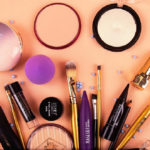Serum is an essential step in any skincare routine, offering a potent solution to various skin concerns such as acne, hyperpigmentation, dryness, and texture issues. However, if used incorrectly, it can do more harm than good.
Not Cleansing Properly:
Proper cleansing is crucial to the effectiveness of subsequent steps. Ensure you thoroughly cleanse your skin by first using a makeup remover to wipe away dirt and makeup residue, followed by a gentle face wash for a deeper clean, and finally, toning your skin. Exfoliating 2-3 times a week is also essential to unclog pores, leaving your skin brighter, healthier, and ready to absorb the serum’s active ingredients.

Incorrect serum usage can hinder desired results and harm your skin.
Applying in the Wrong Order:
Serum should be applied immediately after toning and before moisturizing. Toners help balance the skin’s pH levels after cleansing. Applying serum before toner can alter the effectiveness of its active ingredients due to the higher pH levels present after cleansing. Applying it after moisturizer, on the other hand, can hinder absorption as the skin is already coated with a layer of hydration.
Choosing the Wrong Serum for Your Skin Type:
To determine if your serum is suitable, consider the following:
– What is your primary goal for using a serum? Is it hydration, acne treatment, or anti-aging?
– What is your skin type? Is it dry, oily, or combination?

Identify the purpose of using a serum.
Using the Wrong Amount:
Similar to sunscreen and face masks, using too much or too little serum can be ineffective. Applying too little may not provide sufficient nourishment to your skin, while using too much can overwhelm and clog your pores.
Skipping Moisturizer and Sunscreen:
Moisturizer and sunscreen are vital steps to help seal in the active ingredients of the serum and protect your skin. Without these steps, your skin may become imbalanced, leading to dryness and premature aging.
Avoid pressing too hard on your skin when applying serum, as this can accelerate aging and cause skin laxity. Instead, gently massage the serum into your skin to ensure effective absorption.






































